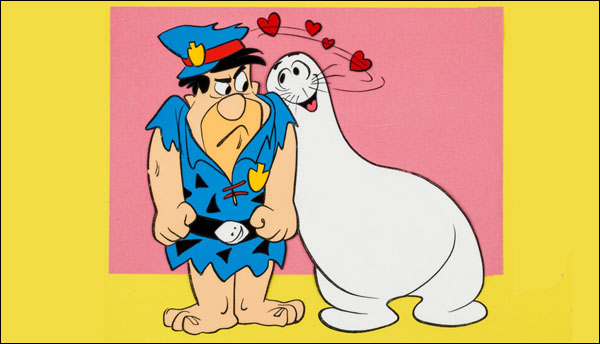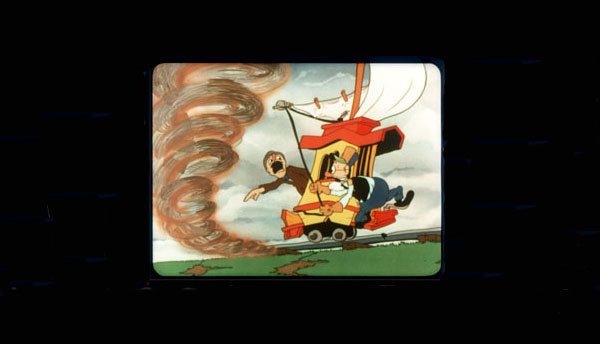Tom Baron and Dick Hall are not exactly names that trip off the tongues of animation historians, though parts of their careers (if only in terms of credits) are easy enough to discover. Both were also interviewed for Michael Barrier’s book, Hollywood Cartoons, though they are unpublished; the only detailed article I could find on either was Alberto Becattini’s on Baron found here, which is more chronological than analytical.


Typical of the comics written by Tom Baron
What he doesn’t mention was that he was also a pioneer of TV animation, having animated the The Adventures of Pow Wow series for Tempe Toons, which debuted early in 1957, over six months before Hanna Barbera’s Ruff and Reddy. The one episode available on YouTube, The Magic Spigot, fascinatingly has a style more akin to that of classic 1940s studios than the UPA-influenced Hanna-Barbera shows that later defined American TV cartoons. He later became executive in charge of production for the Bozo: The World’s Most Famous Clown TV series (also directing several episodes), and did background and layout for John Wilson’s feature Shinbone Alley (1971).
Otherwise, he worked for a number of other studios, including Jam Handy, MGM, Hanna-Barbera and Filmation. And, during the postwar years, like a number of other animation artists, he worked in comic books.
 Dick Hall (originally Dick Marion) had a more extensive career in comic books than Baron; in fact, much of what one finds on Hall online seems to involve debates on who drew which comic book story. His decision to go into comics, where he drew Woody Woodpecker, Andy Panda and Mickey Mouse, seemed largely motivated by money, as it then paid more than animation. In animation, he bounced around studios quite a bit — including Fleischer, Disney, Iwerks, Hanna-Barbera and Filmation — and was famously fired by Walt Disney when Hall was discovered looking for another job.
Dick Hall (originally Dick Marion) had a more extensive career in comic books than Baron; in fact, much of what one finds on Hall online seems to involve debates on who drew which comic book story. His decision to go into comics, where he drew Woody Woodpecker, Andy Panda and Mickey Mouse, seemed largely motivated by money, as it then paid more than animation. In animation, he bounced around studios quite a bit — including Fleischer, Disney, Iwerks, Hanna-Barbera and Filmation — and was famously fired by Walt Disney when Hall was discovered looking for another job.
His reply to my question as to what some of his fondest memories of working in animation is somewhat negative, reflecting the reality that for any number of artists, animation was basically just a job. Along these lines, it was something of a surprise to hear his telling of his encounter with Winsor McCay while working at The New York Journal, who warned him against going into animation. An even more pleasant surprise was the realization that he not only knew my father, Joe Deneroff, but considered him to be his friend; it was these sorts of encounters that I relished in my research on animation history.



 Harvey Deneroff is an independent film and animation historian based in Los Angeles specializing in labor history. The founder and past president of the Society for Animation Studies, he was also the first editor of Animation Magazine and AWN.com. Harvey also blogs at deneroff.com/blog.
Harvey Deneroff is an independent film and animation historian based in Los Angeles specializing in labor history. The founder and past president of the Society for Animation Studies, he was also the first editor of Animation Magazine and AWN.com. Harvey also blogs at deneroff.com/blog.




































































Which Disney comics did Dick Hall do and have they ever been reprinted in recent years?
It is dizzying to note how many animation artists drifted from studio to studio. I often wish that some had memories of working on specific cartoons, but as always, these interviews are very interesting.